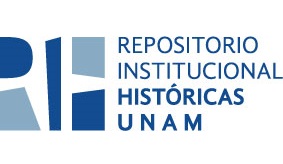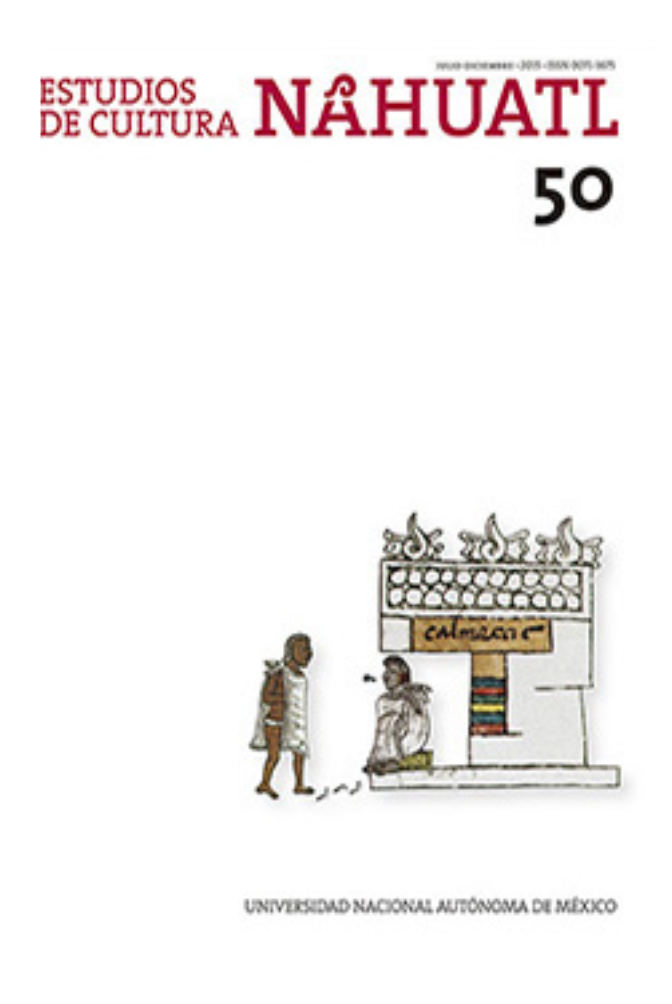Buscar
Mostrando ítems 1-10 de 35
Artículo
Miguel Sabido, Teatro sagrado. Los “coloquios” de México, México, Siglo XXI, 2014, 365 p.
(Instituto de Investigaciones Históricas, Universidad Nacional Autónoma de México, 2015)
This review examines Teatro sagrado by Miguel Sabido, a book devoted to sacred popular performances in Mexico known as “coloquios.” The author explores their Mesoamerican roots, colonial evangelization links, and survival ...
Artículo
Ilhuitl (día, parte diurna, veintena) y sus divisiones
(Instituto de Investigaciones Históricas, Universidad Nacional Autónoma de México, 2015)
This article aims to see the different meanings that can take the word ilhuitl in relation with various contexts of use. Also, to determine how the Nahuatl language, with various resources, allows us to know how to select ...
Artículo
Mercedes Montes de Oca, Los difrasismos en el náhuatl de los siglos xvi y xvii, México, Universidad Nacional Autónoma de México, Instituto de Investigaciones Filológicas, 2013, 668 p.
(Instituto de Investigaciones Históricas, Universidad Nacional Autónoma de México, 2015)
Mercedes Montes de Oca’s work thoroughly examines difrasismos—dual expressions characteristic of the Nahuatl language—from the 16th and 17th centuries. Using a methodology that blends historical linguistics, cognitive ...
Artículo
Michel Graulich, Moctezuma, apogeo y caída del imperio azteca, Era/Instituto Nacional de Antropología e Historia, México, 2014.
(Instituto de Investigaciones Históricas, Universidad Nacional Autónoma de México, 2015)
This review examines the Spanish edition of Michel Graulich’s book on Motecuhzoma II, originally published in French in 1994. The book offers an innovative perspective by interweaving indigenous and Spanish sources with a ...
Artículo
Entre la fertilidad agrícola y la generación humana: el rol fecundante del mono entre los antiguos nahuas
(Instituto de Investigaciones Históricas, Universidad Nacional Autónoma de México, 2015)
In this article I study the symbolisms of fertility, procreation and abundance attributed to monkey among ancient Nahuas, which were projected toward the farm and human spheres. In an outstanding way, the figure of monkey ...
Artículo
En torno a las voces y los conceptos de la muerte ritual en cuatro manuscritos nahuas sobre la Pasión de Cristo
(Instituto de Investigaciones Históricas, Universidad Nacional Autónoma de México, 2015)
This paper describes the Nahua words that named Christian categories on Christ’s sacrifice in four Nahua manuscripts of possible Franciscan filiation. The main objective is to analyze those words, which by various acculturation ...
Artículo
Garibay, León-Portilla y los escritores nahuas en la revista
(Instituto de Investigaciones Históricas, Universidad Nacional Autónoma de México, 2015)
This essay honors Ángel María Garibay and Miguel León-Portilla for their pioneering work in recovering, studying, and promoting Indigenous languages, especially Nahuatl, through the journal Estudios de Cultura Náhuatl. ...
Artículo
Lingüística y filología en esta revista
(Instituto de Investigaciones Históricas, Universidad Nacional Autónoma de México, 2015)
In this commemorative article, the editors of Estudios de Cultura Náhuatl reflect on the central role of linguistics and philology in the journal's development since its founding in 1959. The text surveys major contributions ...
Artículo
Los estudios del arte náhuatl
(Instituto de Investigaciones Históricas, Universidad Nacional Autónoma de México, 2015)
This article reviews the main works on Nahua art published in the journal Estudios de Cultura Náhuatl from its first issue in 1959 to volume 50 in 2015. Contributions by scholars such as Justino Fernández, Samuel Martí, ...
Artículo
Modos metafóricos y adecuación retórica en dos textos de fray Bernardino de Sahagún
(Instituto de Investigaciones Históricas, Universidad Nacional Autónoma de México, 2015)
In this article I propose a reading of Sahagún’s Coloquiosy Psalmodia Christiana as rhetorical experiments to translate particular concepts and doctrinal elements to a new context of epistemological domination. I will ...












